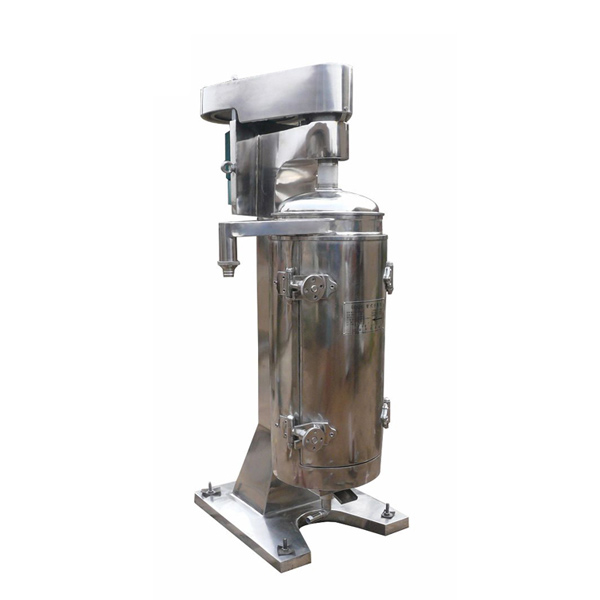The mixture continuously enters Bacteria Centrifuge through an inlet at the base of the machine, into the hollow cylindrical rotor. The rotor turns at 14,000 to 19,000 r.p.m. and generates a centrifugal force in excess of 13,000 to 17,000 times the force of gravity. The smallest lab tubular centrifuge can reach 30,000 rpm, 20,000g.
This force separates the two liquids according to their specific gravities into concentric cylindrical layers, and the solids are deposited against the rotor wall.
The separated liquids are continuously displaced upwards by the incoming mixture, and supernate through its outlet port at the top of the rotor. The layer of accumulated solids that builds up on the rotor wall is harvested or cleaned out when the centrifuge is shut down.
It is a kind of high speed tubular centrifuge widely for bacteria separation of biological industry for example fermentation broth, Lysate, Ecoli, lactic acid bacteria, bacillus, pseudomonas, yeast, protein, mucopolysaccharide, serum, enzyme, vaccine, virus harvesting, genetic engineering, Placental tissue fluid, mammalian cells, IGY etc
1.Steam sterilizable----121 vapor pressure resistive (CIP,SIP)
2.Maintain biological activity----Cooling coil equipped for keeping low temperature
3.Ambient gas control----for some feedstock not contacting with air
4.Rotatin speed can be adjusted----for differnt tests and feedstocks
5.Rapid separation
6.Consistent performance
7.Physical process, no other additive
8.Range of models: facilitate scale-up
9.Simple to set up, use and clean-for minimal down-time between separations
10.No replacement membranes, or costly disposables
11.Small footprint----saves space
12.For mixtures with very high solids concentrations, extra bowl can be supplied
bio-equip.cn




